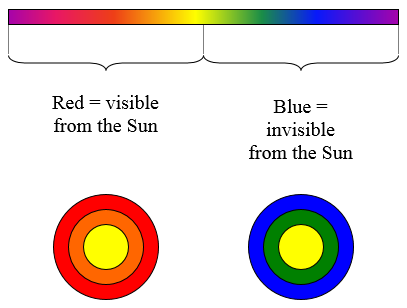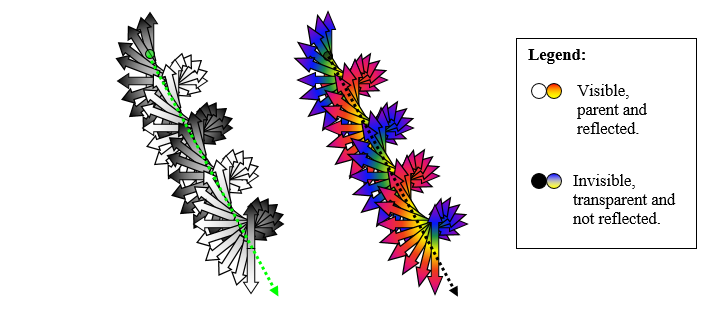

Visible and Invisible Light

Introduction
The partition of the colors
The visible and invisible light
When the visible and invisible rays of light join together
The wave
This research shows that light can be invisible and we also demonstrate a vision of the distribution of colors in a different perspective. You will see how we can create with only these two primary colors: blue and red. Yellow could be like purple, that is to say a mixed blue and red to a yellow or purple. Cooperative force between the blue and red may be the origin of a distribution of color as we see in the rainbow.
 |
Back to the top of the page |
The colors consist of 3 colors in theory currently: blue, yellow and red. But as we see in Figure 1 below, we separated the colors into 2 parts. It is a new theory which assumes that the base of the colors is made with two opposing forces that cooperate.
With Figure 2, we can understand that the colors are composed of two primary fields: the red field and the blue field. We can also understand that the Yin and Yang (2 opposing forces cooperating) could also be blue and red. Now we separate the colors into 2 parts, the following look like the color perception of the sun.
 |
Back to the top of the page |
If we look at the color of the Sun (or other heated object), visible light has a color gradient from yellow to red. But there is also invisible light and you will see proof in the next section.
Black and white colors of a light ray are also linked (see Figure 4).
As shown in Figure 4, the yellow color (may be replaced by violet) is such as gray color. It is possible to see the effect of the color of the visible sunlight by observing the light absorption effect on Earth.
Looking at Figure 5, we can see that the color of our skin is made to absorb the visible and invisible sunlight.
Figure 6 shows that the color (usually green) of the trees is designed to absorb the sunlight invisible. Plants and trees become yellow when the sunlight is almost absent because of an obstacle: the absorption sequence created by the magnetic field of the planet produces yellow if the green color is taken by an obstacle placed before.
 |
Back to the top of the page |
The light seen by the sun may appear white. This is created when the invisible and the visible make contact. Based on this theory, the shadow may simply be dark light (black colored) becoming visible when white light is reflected by a surface. We must consider that the black light has the opposite white light property.
 |
Back to the top of the page |
As shown in another research paper1, the wave also has an invisible side or dark side.
 |
Back to the top of the page |























